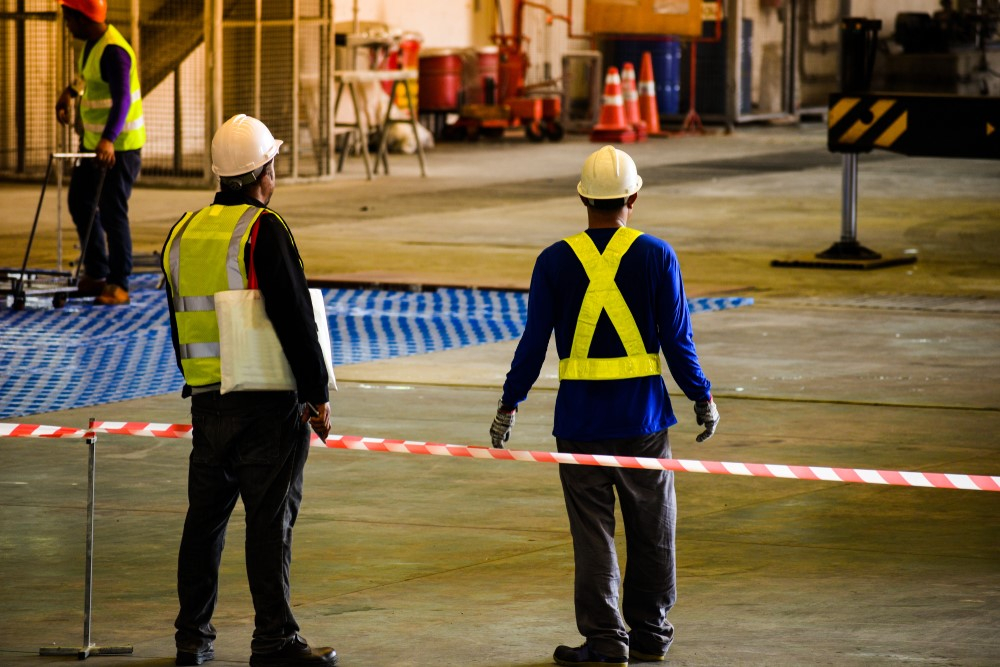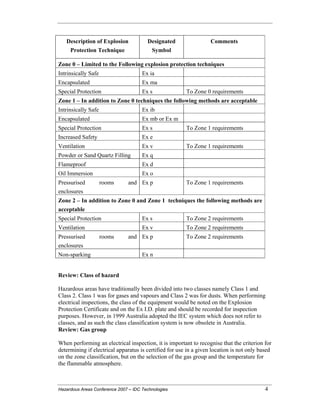The Ultimate Guide To Roar Solutions
The Ultimate Guide To Roar Solutions
Blog Article
The Greatest Guide To Roar Solutions
Table of ContentsFascination About Roar SolutionsGetting The Roar Solutions To Work3 Easy Facts About Roar Solutions Described
In such an environment a fire or surge is possible when 3 standard conditions are fulfilled. This is commonly referred to as the "dangerous location" or "combustion" triangular. In order to protect installments from a prospective surge an approach of evaluating and identifying a potentially hazardous area is required. The purpose of this is to ensure the correct choice and installment of devices to eventually stop a surge and to ensure security of life.
(https://www.video-bookmark.com/bookmark/6634779/roar-solutions/)
No devices must be set up where the surface area temperature of the devices is higher than the ignition temperature of the given danger. Below are some typical dirt unsafe and their minimum ignition temperature level. Coal Dirt 380C 225C Polythene 420C (thaws) Methyl Cellulose 420C 320C Starch 460C 435C Flour 490C 340C Sugar 490C 460C Grain Dust 510C 300C Phenolic Material 530C > 450C Aluminium 590C > 450C PVC 700C > 450C Soot 810C 570C The possibility of the hazard being present in a focus high enough to create an ignition will differ from area to area.
Dangerous location electric tools maybe created for use in greater ambient temperatures. Field Repair By Authorised Employee: Difficult screening might not be required however specific treatments may need to be followed in order for the equipment to maintain its third celebration ranking. Each piece of equipment with a harmful ranking must be assessed separately.
Roar Solutions Can Be Fun For Everyone
The devices register is an extensive database of equipment records that consists of a minimum collection of areas to determine each thing's place, technical specifications, Ex-spouse classification, age, and environmental data. This info is critical for monitoring and taking care of the equipment successfully within dangerous areas. In contrast, for regular or RBI tasting inspections, the grade will certainly be a combination of Detailed and Close examinations. The ratio of Detailed to Shut inspections will certainly be determined by the Tools Danger, which is assessed based upon ignition threat (the possibility of a source of ignition versus the likelihood of a combustible environment )and the harmful location classification
( Zone 0, 1, or 2). This variation will certainly additionally influence the resourcing requirements for work preparation. When Great deals are defined, you can develop sampling strategies based on the example size of each Whole lot, which refers to the variety of arbitrary equipment products to be inspected. To figure out the called for sample dimension, 2 facets require to be examined: the size of the Great deal and the category of inspection, which suggests the level of effort that must be applied( reduced, normal, or enhanced )to the assessment of the Whole lot. By incorporating the category of evaluation with the Lot dimension, more info here you can then establish the appropriate being rejected standards for an example, implying the allowable variety of defective items located within that example. For even more information on this process, please refer to the Energy Institute Standards. The IEC 60079 typical recommends that the maximum interval between evaluations must not exceed three years. EEHA assessments will certainly likewise be conducted beyond RBI projects as part of arranged maintenance and equipment overhauls or repairs. These inspections can be attributed towards the RBI example sizes within the influenced Great deals. EEHA assessments are conducted to recognize faults in electric devices. A weighted scoring system is essential, as a solitary piece of equipment might have several mistakes, each with varying levels of ignition danger. If the mixed score of both assessments is less than twice the fault rating, the Lot is considered appropriate. If the Great deal is still taken into consideration unacceptable, it needs to undertake a complete evaluation or validation, which might cause more stringent inspection methods. Accepted Lot: The reasons for any mistakes are identified. If a typical failure mode is discovered, added tools may require examination and fixing. Faults are categorized by extent( Safety and security, Stability, Housekeeping ), guaranteeing that urgent problems are examined and addressed quickly to alleviate any kind of effect on safety or procedures. The EEHA database ought to track and record the lifecycle of faults in addition to the rehabilitative actions taken. Executing a robust Risk-Based Assessment( RBI )strategy is crucial for ensuring compliance and security in handling Electrical Tools in Hazardous Locations( EEHA) (hazardous area course). Automated Mistake Rating and Lifecycle Administration: Effortlessly handle faults and track their lifecycle to boost examination accuracy. The intro of this support for risk-based assessment additionally enhances Inspectivity's position as a best-in-class remedy for regulative compliance, in addition to for any type of asset-centric assessment use situation. If you are interested in finding out more, we invite you to ask for a demo and uncover exactly how our service can change your EEHA management processes.
More About Roar Solutions

In regards to explosive danger, a hazardous location is a setting in which an eruptive ambience exists (or might be anticipated to be existing) in amounts that call for unique safety measures for the construction, installment and usage of equipment. Roar Training Solutions. In this post we explore the challenges faced in the workplace, the risk control procedures, and the called for expertises to work securely
These substances can, in specific conditions, form explosive environments and these can have major and unfortunate consequences. Many of us are acquainted with the fire triangle get rid of any kind of one of the 3 elements and the fire can not happen, however what does this mean in the context of harmful locations?
In a lot of instances, we can do little about the degrees of oxygen airborne, but we can have substantial impact on sources of ignition, as an example electric tools. Unsafe locations are recorded on the harmful location classification drawing and are recognized on-site by the triangular "EX-SPOUSE" indication. Right here, amongst other key details, zones are divided right into three types relying on the threat, the possibility and period that an explosive atmosphere will exist; Area 0 or 20 is deemed one of the most harmful and Zone 2 or 22 is considered the least.
Report this page